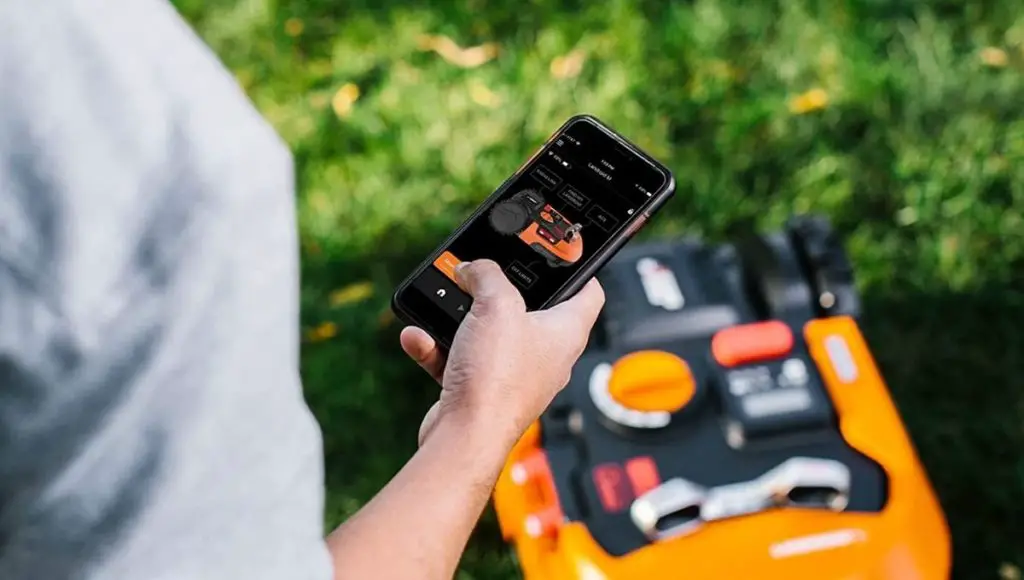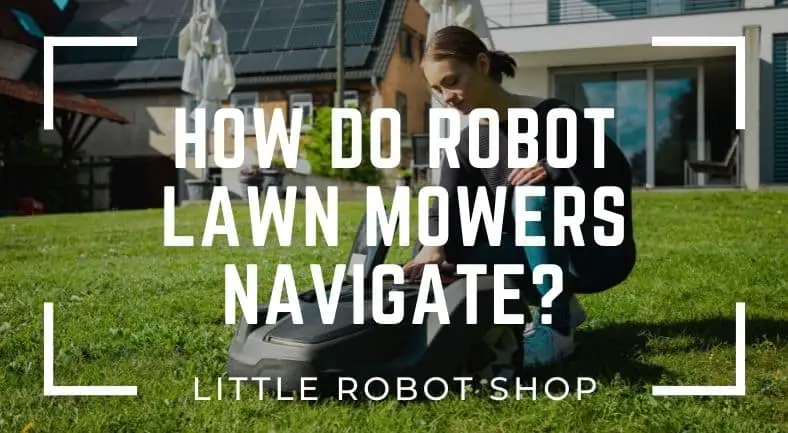Robotic lawn mowers are becoming more advanced, with impressive new technologies included in newer models. These robots represented the second-largest category of domestic robots. They produce a much healthier, and better looking lawn, no wonder they are becoming more popular than the traditional push mower.
But how do the best robot mowers know how to navigate a lawn? Why do some robotic mowers move in straight lines while others move randomly? If you’ve ever pondered on these questions, now is your chance to find answers.
Random Mowing System
Most robot mowers use a “random” mowing system to mow the lawn. The robot generally drives around the lawn until it encounters the boundary wire that limits the working area, then switches direction until it meets the wire again.
Unlike robotic vacuum cleaners, most robotic lawn mowers do not have an advanced navigation algorithm. And without this feature, there is basically no way for the robot to know or map their environment.
Random mowing may sound chaotic, and it is, but most often than not, robotic mowers cover almost every part of the lawn. As you would expect, this navigation system has some obvious downsides.
First, the lawn mowing takes more time than necessary to complete, which is not energy-efficient. Secondly, robot lawn mowers will mow certain areas more frequently than others, and a few spots can be left uncut, since they have no way of ‘knowing’ whether an area has been mowed or not.

Systematic Mowing System
Since the random mowing system is obviously not very efficient, there have been attempts to introduce a more reliable and energy-efficient mowing system, something similar to what we see in robotic vacuum cleaners.
The Bosch robotic lawn mower is one brand that has successfully implemented a systematic mowing system in their ‘Indego’ robots. Bosch Indego robot lawn mowers have an advanced navigation system called ‘LogiCut Intelligent Navigation System.’
With this system, the Bosch Indego is able to mow in a structured and calculated pattern instead of a random configuration like most robotic lawnmowers. Its advanced navigation system helps it to mow in a row-like formation, which is a far more efficient way of mowing. Unfortunately, the Bosch Indego robots are not available in the US.
Besides Bosch, there are other robot lawn mower brands with systematic mowing systems like the Toadi and iRobot Terra. iRobot is renowned for their inventive brand of robotic vacuum cleaners, and they want to replicate that success in robot lawn mowers with the Terra.
The iRobot Terra is set to have the Imprint™ Smart Mapping technology to map and learn the layout of gardens, intelligently avoiding obstacles and mowing in back-and-forth, efficient, straight lines.
Toadi uses a 4k camera and AI to recognize and avoid objects in its path, such as trees, animals and people, etc. The lawn robot creates a detailed 3d map of a lawn, and it uses AI and the map to smartly navigate the lawn. Toadi also calculates how large the lawn area is and makes a mowing schedule based on the complexity and size of a lawn. While Toadi is already on the market, Terra is yet to launch.
Ecovacs have also just announced that they are entering the robot mowing market with the impressive looking ECOVACS Goat G1.
GPS Assisted Navigation
Theoretically, robot lawn mowers with GPS navigation combine the benefits of random and systematic navigation because they are able to mow both randomly and systematically.
A robot lawn mower with GPS navigation will first randomly drive around the lawn, and in the process it collects the GPS coordinates of the entire lawn. After collecting enough coordinates, it then creates a digital map of the lawn. This can take anywhere from one to four days, depending on the size of your lawn and how complex it is.
The digital map helps the robot to gauge the size, shape and complexity of your lawn. With this information, the robot lawn mower will now be able to intelligently navigate the lawn. During a mowing session, the robot will be able to tell which areas it has covered and which areas are left. This helps the robot become faster and more efficient, and it gets even better with time.
The initial setup process of a robot lawn mower involves laying down perimeter wire along the edges of your lawn. This exercise may be tedious and time-consuming, but it’s very essential and contributes to the performance of robot lawn mowers.
Perimeter wires or (guide wires) help with robot lawn mower navigation, the wires are there to define the edges of the lawn, they act as boundary markers (like an invisible fence). Robot lawn mowers use sensors to communicate with guide wires, as they approach a section of the lawn with a guide wire, they sense the wire, turn around and continue mowing in a different direction.
Perimeter wires are either laid on the ground or buried a few centimeters into the soil. Recently, there are talks of new robot lawn mower models with wire-free boundary systems, which means that they will be able to detect lawn edges without the help of guide wires.

How Robot Lawn Mowers Deal With Obstacles
Lawns often have obstacles like flower beds, trees, etc., and robotic mowers have a system for avoiding obstacles it may come across on the lawn. Robots, as you may already know, generally use sensors to perceive their surroundings.
While it’s evident that most robotic lawnmowers lack sophisticated navigation software, they are still able to expertly avoid disastrous collisions. Robot lawn mowers work with sensors to see and avoid obstacles in their path. The design of these robots are actually very basic in this regard. They often have obstacle detection & collision avoidance sensors on their front bumper.
When these sensors detect an obstacle, they signal the robot to slow down, so the robot slows down, gently bumps into the obstacle and turns to continue mowing in a different direction. Robot lawn mowers will generally avoid large obstacles like trees, or large fallen branches, but if the obstacle is very small like a small toy, dog poop or a garden hose, it will drive over it and this can be destructive for the obstacle.
If you have flower beds or some sections of your lawn that you would like your robot lawn mower to avoid, then you should use the perimeter wire to cordon off those sections.

FAQs
Do robot mowers use GPS?
Robot lawn mowers use GPS technology, especially brands such as Ambrogio, Husqvarna, and Robomow. GPS in robotic lawn mowers are mostly used for either navigation or tracking for security. GPS-assisted navigation is useful for optimizing the mowing process, while GPS tracking works as an anti-theft security feature.
Do robot mowers cut to the edge?
Edge cutting is a tricky task for robot lawn mowers, and there are certain brands like the Worx Landroid that put extra effort in incorporating an edge-cutting feature in their lawn mower designs. But the truth remains that is no robot lawn mower cuts right up to the edge of a solid obstacle. This is due to the distance between the blade disc and the robot body. So, if your lawn is surrounded by a fence, expect your robot lawn mower to leave an uncut strip of grass at the edges.
Can robotic mowers go over path?
It’s possible for a robot mower to safely drive over a flat path, however the perimeter wire should be carefully placed such that it guides the robot to safely cross the path. If your lawn is separated by a pavement walkway, it’s important to find the shorter possible route for crossing the path. Never allow a robot mower to close a gravel or mulch path, as they could damage their blade in the process.
Can robot lawn mowers cope with leaves?
Yes, robot lawn mowers can handle leaves. A robot lawn mower can mulch leaves in your yard. You can’t expect your robotic mower to drive over large heaps of leaves and shred them, just like a conventional lawn mower.

Emma Marie is a valued writer at the Little Robot Shop. She studied robotics and deeply understands technology, which shows in her writing. She consistently produces high-quality content, making her a perfect fit for the Little Robot Shop team.
While not writing, Emma works in a popular electronics retail chain. Emma also enjoys running and has two dogs with whom she loves spending time.
